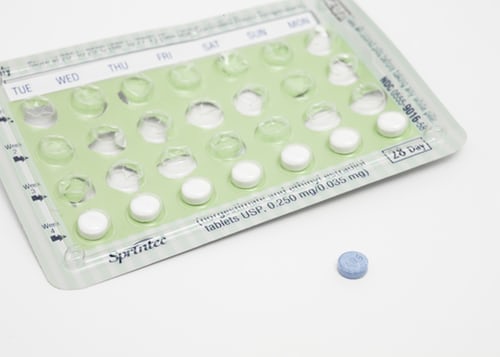I have to say that while I believe ‘the pill’ is a lifesaver and a necessary evil, it is also an over-prescribed ‘castration’. Since its conception (excuse the pun) in the 1950s’, use of the oral contraceptive pill (OCP) has exploded.
Studies show that 89% of 35–69–year–old women report having used the OCP at some point in their life and 9% of 35–69-year-old were currently using it in a New Zealand study from 2013 (1).
With 11 October being International Day of the Girl Child, it is timely to discuss the most commonly used reversible contraceptive option.
The OCP was initially marketed for ‘cycle control‘ or ‘menstrual regulation’, and not for contraception, as contraception was prohibited. Until 1969, doctors could be prosecuted for prescribing the pill for contraception (2). This is probably led to be it being, in my opinion, over-prescribed as the panacea solution to almost all menstrual and female acne issues.
No doubt the OCP has given women incredible reproductive autonomy and significantly reduced the incidence of unplanned pregnancy, abortion and pregnancy complications.
Additionally, the OCP and the injectable or implantable hormonal methods of contraception are obviously appropriate in those deemed by themselves (or by their parents, in the case of those under the age of consent) as either: unable to guarantee optimal use of barrier methods such as condoms or natural fertility methods; or unable to use non-hormonal methods such as the intra-uterine device (IUD); or for those with menorrhagia, dysmenorrhoea, or anaemia etc uncontrolled by conservative measures.
Whilst, the OCP is mostly safe, it is not without its potential side effects. The potential for venous clotting is well recognised, but depression, pancreatitis, reduced gain of normal bone mass, hair loss and increased weight potentially leading to self-esteem issues are among the less well-known potential side effects (3, 4).
I personally have seen women’s depression improve or disappear when they stop the OCP after careful counselling about alternative contraception options.
Another underrated ‘side effect’ is that the OCP and most other forms of hormonal contraception suppresses women’s normal hormonal cycles. This means their cycles cannot be utilised as a vital sign, or in other words an indicator of health.
The importance of this vital sign is backed up by the American College of Obstetricians and Gynaecologists, who in 2015, along with the American Academy of Paediatrics, said this:
“Identification of abnormal menstrual patterns in adolescence may improve early identification of potential health concerns for adulthood. It is important for clinicians to have an understanding of the menstrual patterns of adolescent girls, the ability to differentiate between normal and abnormal menstruation, and the skill to know how to evaluate the adolescent girl patient. By including an evaluation of the menstrual cycle as an additional vital sign, clinicians reinforce its importance in assessing overall health status for patients and caretakers.”
It is beyond the scope of this article to discuss alternative contraceptive options, but, critically and little known among most healthcare practitioners, is that the American Academy of Paediatrics stated in 2014 that IUDs are a first-line contraceptive choice for teenagers, overturning the previous opinion that IUDs should not be used until after childbirth. The risk of potential side effects of the IUD can be reduced with conventional or complementary therapies, including insertion after sterile swabbing.
While I am well aware of the time involved, we as healthcare practitioners owe it to our patients to take the time to at least point them to resources to help them make truly informed decisions about all forms of contraception that may help with their menstrual symptoms and/or acne, rather than automatically handing out an OCP prescription.
Such resources include:
www.cemcor.ubc.ca, www.familyplanning.org.nz and www.naturalfertility.co.nz.
References:
- Scholes D, Hubbard RA, Ichikawa LE, LaCroix AZ, Spangler L, Beasley JM et al. Oral contraceptive use and bone density change in adolescent and young adult women: a prospective study of age, hormone dose, and discontinuation. J Clin Endocrinol Metab 2011; 96(9):E1380-E1387.

